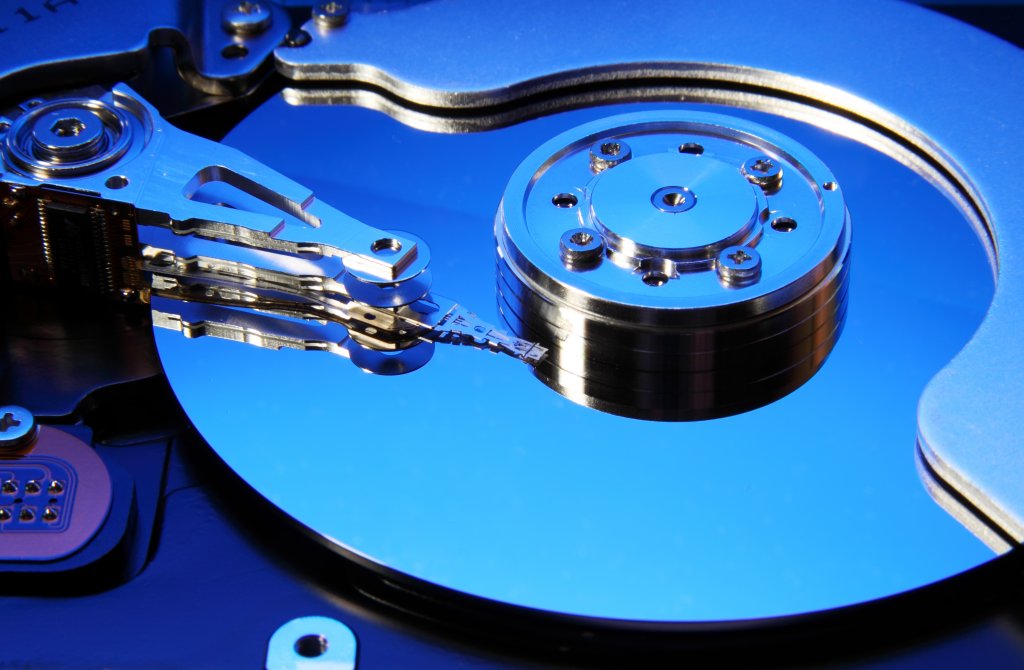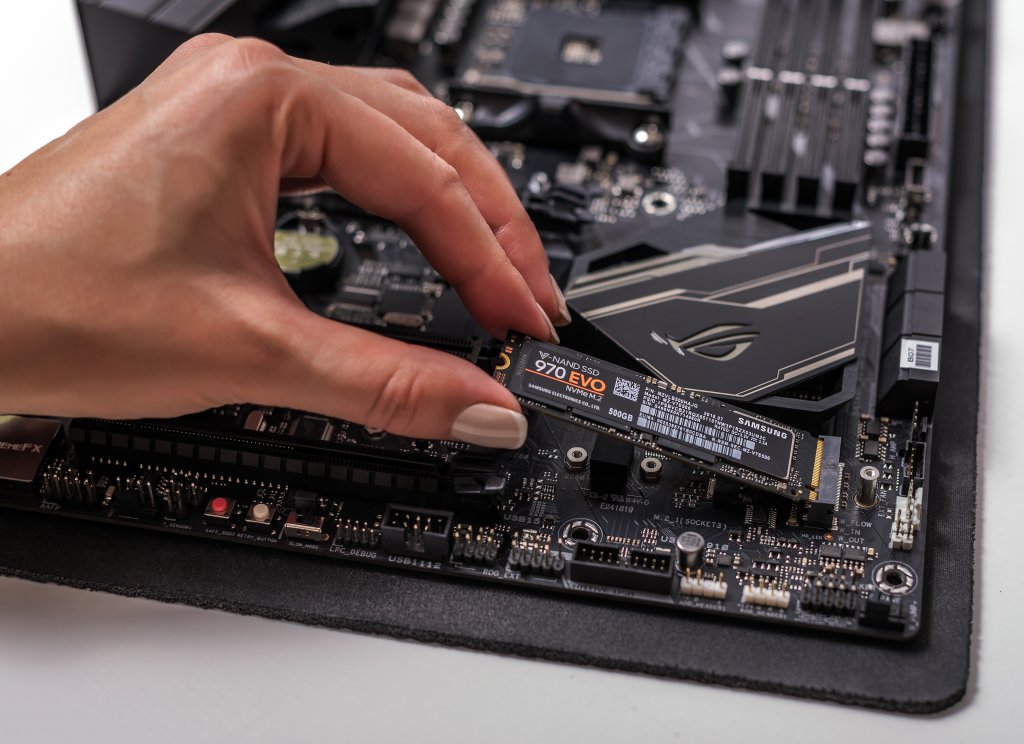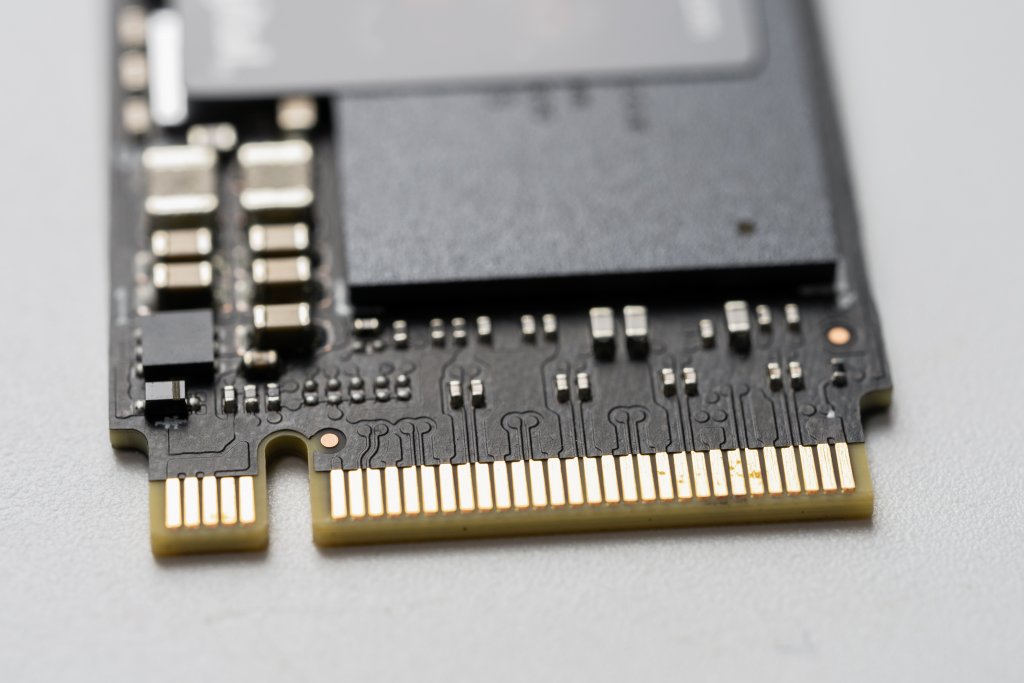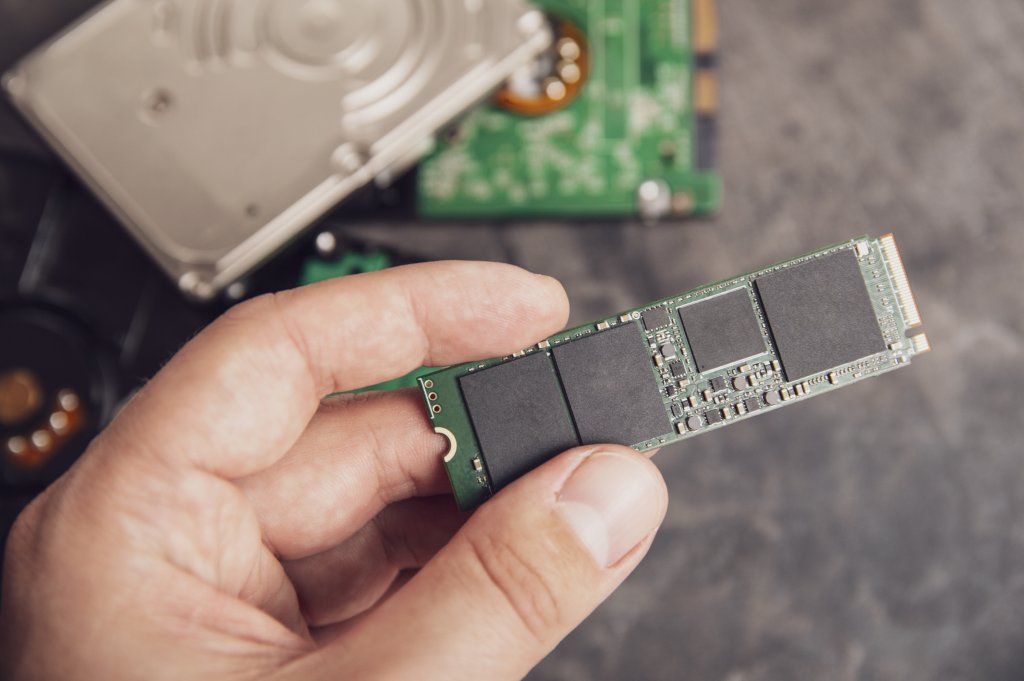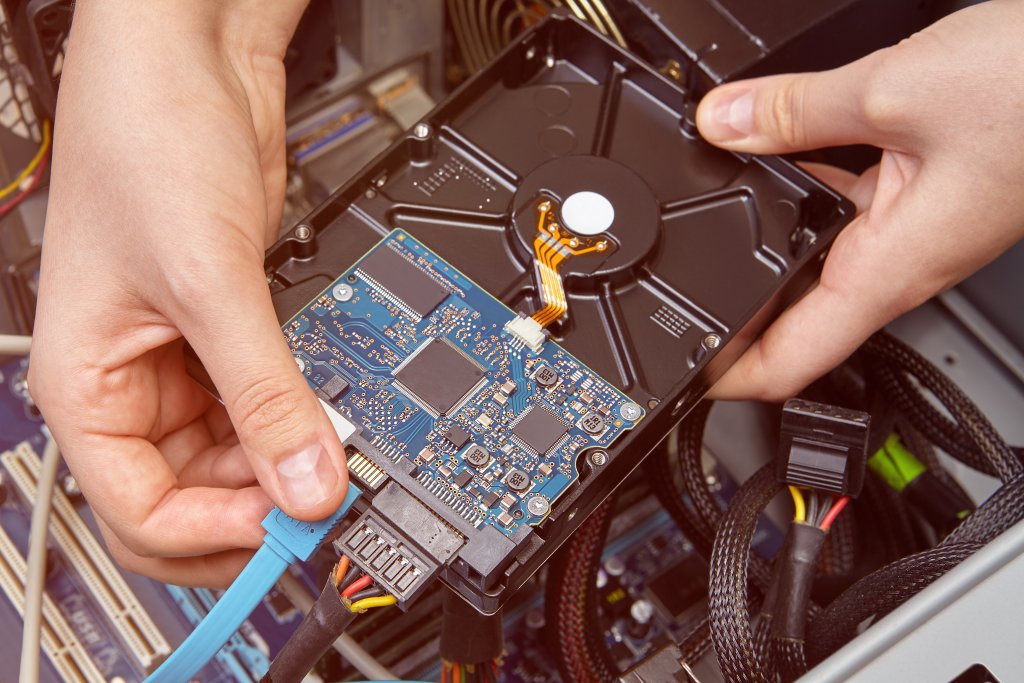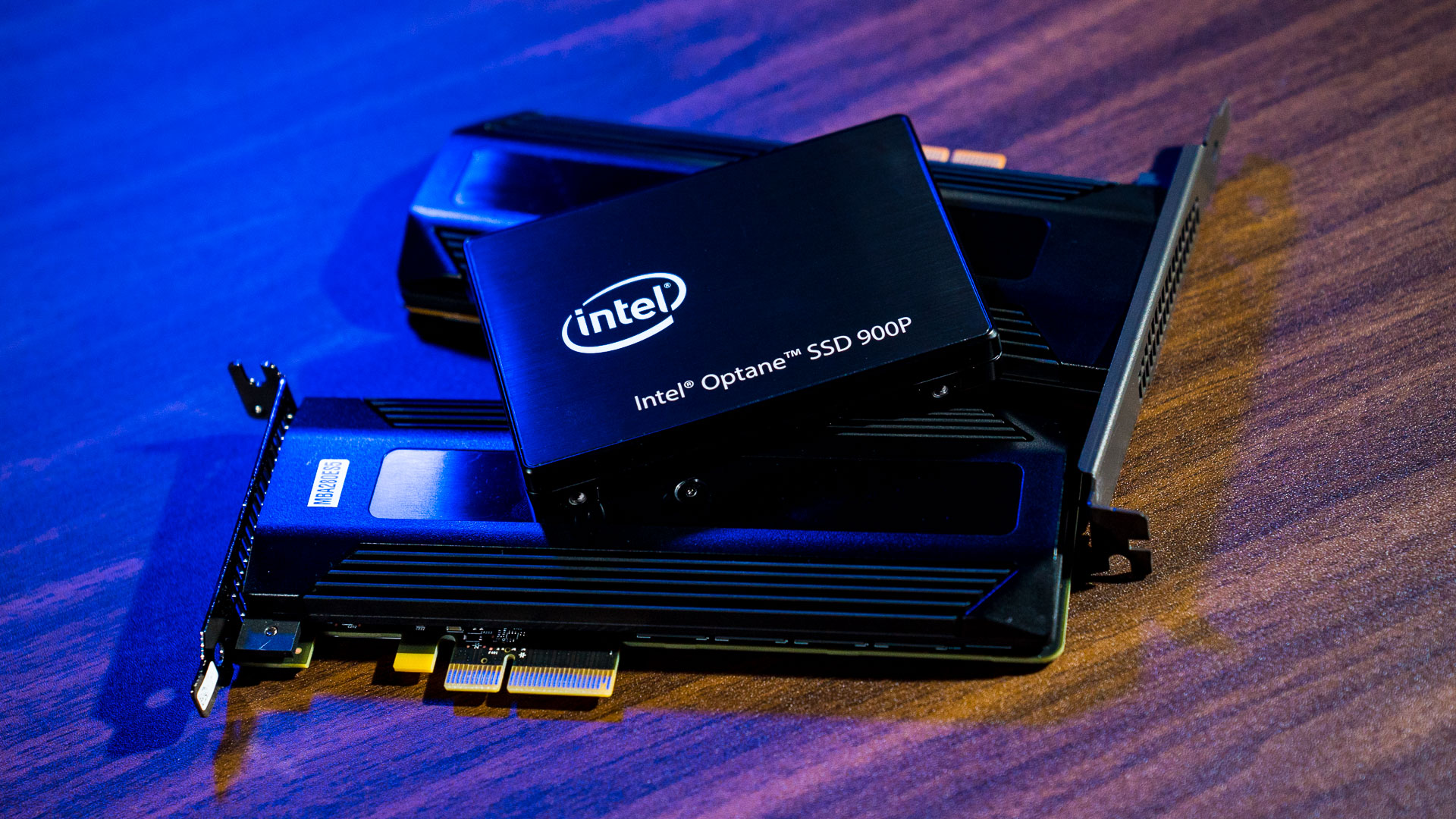
Whether you’re building a PC for the first time or just looking to upgrade the storage components in your desktop PC, picking the right storage option is crucial for getting optimal performance in your system. Often overlooked as something that you need to buy “bigger” to be better, hard drives and storage devices have evolved a bit from their heavy-set historical past. At first, it may seem daunting to keep up with the different formats and technologies. What follows in this buying guide will help you choose the best storage for your desktop PC.
For a quick overview, let’s start with a video on the subject:
Internal vs External Storage
What is internal desktop PC storage? As the name implies, internal desktop PC storage consists of components found within the chassis of any given system. This is true whether the device is a tower desktop or laptop. PC storage components install by a physical connection to either your computer motherboard’s SATA or PCI-E ports. By comparison, external storage consists of storage devices that come equipped with their own chassis. These external products connect to your motherboard or computer-case I/O panels by way of a USB, Thunderbolt, Firewire or eSATA cable. Whether internal or external storage is better than the other depends on:
- Each unit’s capability for specifications such as read and write speeds (see Performance and Capacity section below).
- If space-saving is key and you’d rather not have extra devices and cables outside of your desktop PC.
Quick side note: Both internal and external storage components are secondary storage since they are not directly accessible to the your PC’s central processing unit. Primary storage (your desktop memory/RAM), is in constant communication with your PCs CPU. Another difference between primary and secondary storage is that secondary storage is non-volatile. This means the data stays put even when you shut your computer off.
Internal Storage Types
Like all things in computing, storage hardware comes in many different shapes and sizes. The types of storage drives we’re talking about today are specifically for common daily-computing as opposed to NAS (Network-Attached-Storage) or enterprise-level scenarios. At the end of the day, you are just storing stuff—but knowing each device’s intricacies and their technological history will give you a better understanding of how to implement them.
Hard Disk Drives (HDDs)
The oldest device that we’ll be covering today, hard disk drives, more commonly referred to as hard drives, are mechanical components that use electromagnetism to store data. First introduced in the 1950s with IBM’s 305 RAMAC computer, the first magnetic hard disks changed the world by allowing users to finally access their saved information instantly. Unlike most things in the field of technology, hard drives have withstood the test of time as they are still relevant in today’s systems. But, exactly how does a hard drive work?
When you open a hard drive you’ll see a setup that looks very similar to a record player’s needle on a record. The basic difference comes in the form of an HDD’s applied magnetism. Without touching, the hard drive’s magnetic head (record player’s needle) on its actuator arm is able to access any part of the spinning platter that has also been coated with magnetic material.
Despite being relatively old technology, hard drives have continued to be a popular storage option. This is thanks to years of solid performance and expanding storage space. But, HDDs do have their faults and limitations, and aren’t as fast or feature-rich as newer alternatives.
How to Connect a Hard Drive:
After opening your computer chassis and properly securing your device, you’ll need to plug the data SATA cable from your hard drive to the SATA port on your motherboard. Don’t forget to also plug the SATA power cable from your power supply to your new hard drive (or it won’t turn on!).
Solid-State Drives (SSDs)
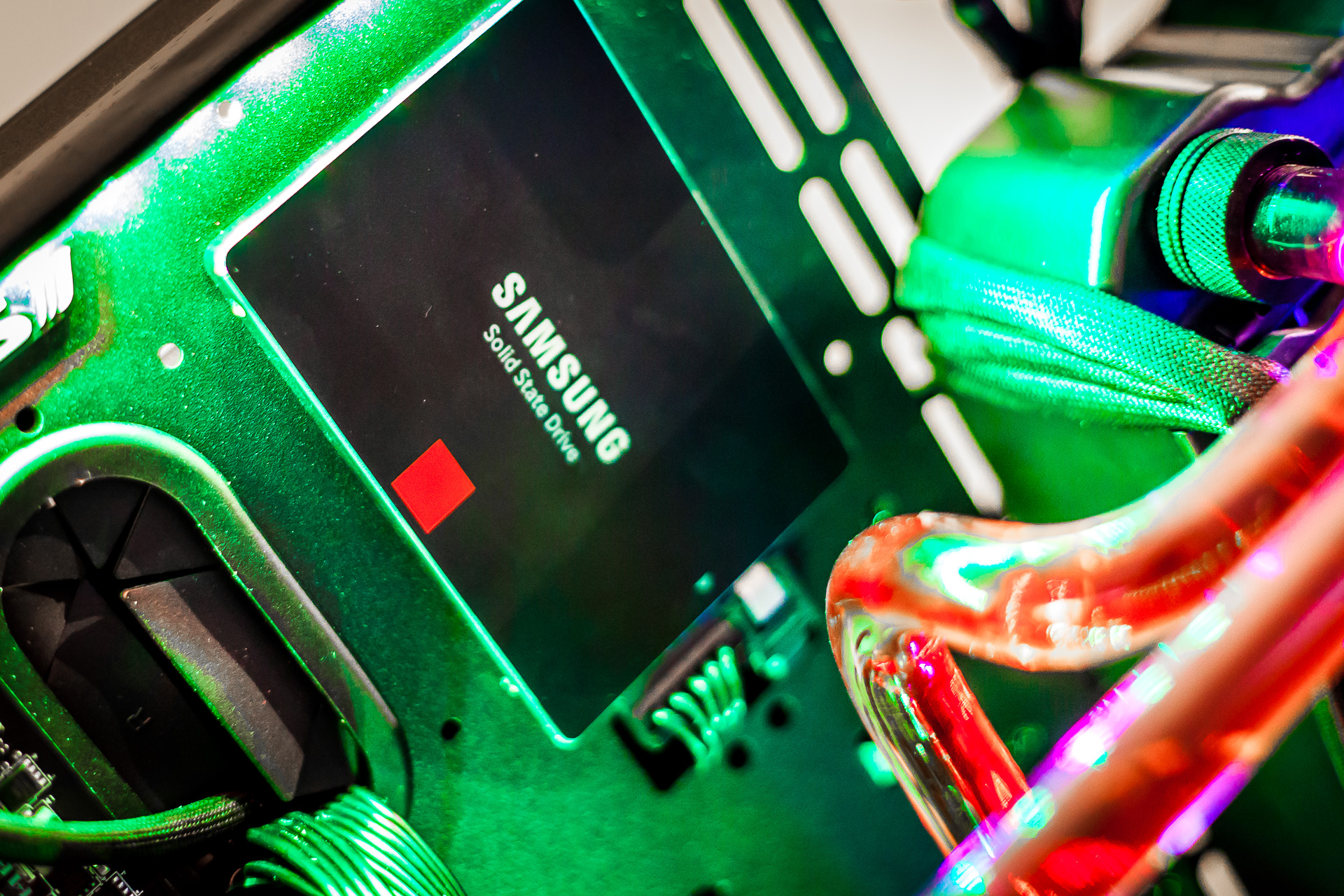 Like most products looking to be on top of the computer tech market, solid-state drives have been manufactured with two goals in mind:
Like most products looking to be on top of the computer tech market, solid-state drives have been manufactured with two goals in mind:
- Be Faster
- Be More Reliable
Due to their mechanical components, hard drives are a bit more prone to physical defects. They’re also not great at withstanding shock damage from being dropped or moved sharply. Because a hard drive has to spin extremely fast (up to 7,200 rotations per minute [RPM] for desktop-level products) there is a finite physical limitation to how fast your data can be accessed or moved.
SSDs are powered and effectively function by way of electronic circuits—and zero moving parts. If you remove the chassis of an SSD you’ll see something very similar to an electronic circuit board. Along with some of the main components found on most circuit boards, SSDs come equipped with flash memory chips (the SSD’s version of an HDD’s spinning disk) and a flash controller (the SSD’s take on the HDD’s magnetic actuator arm). With this format, you’re no longer limited to the physics of spinning and magnetism, but rather the quality and engineered-design of each circuit board. Simply put, this allows for better speed and reliability.
Like hard drives, SSDs have evolved in many ways since their inception, including form factor. The base consumer-level SSDs for desktop PCS come in a hard-drive-like chassis—just much lighter and smaller, with the most common size today being 2.5”. Subsequently, the mSATA and M.2 form factors improve performance in an even smaller and lighter package.
How to Connect Your SSD:
2.5” Form Factor – Installs just like a hard drive. After opening your chassis and properly mounting your SSD, ensure you plug the data SATA cable from your device to your motherboard’s SATA port while also plugging in the SATA power cable from your power supply to your solid-state drive.
PCI-E Form Factor – No more cables! PCI-E solid-state drives are connected via “teeth” to a compatible motherboard slot. Before you start installing, you must ensure that the PCI-E type of SSD matches the specific PCI-E ports on your computer’s motherboard. Along with the original version, the updates have been named: PCI-Express 2.0 x2, PCI-Express 2.0 x4 and PCI-Express 2.0 x8, to name a few. The connotation of “x2” and “x4” refers to the circuit lanes that data moves through per cycle—x2 = two bits per cycle and x4 = four bits per cycle.
mSATA Form Factor – An offshoot of the PCI-E standard, mSATA (mini-SATA) are much smaller card-like versions of standard PCI-E devices. All you have to do is make sure your desktop PC’s motherboard has an mSATA slot. If so, carefully install your mSATA SSD matching up the two different sizes of the board’s connectors, then apply the right screws to secure it.
M.2 Form Factor – An updated form of PCI-E and the current standard for top speed and reliability. Like its parent technology, the M.2 architecture has gone through some revisions. These include: M.2 2242, M.2 2260 and the most recent + popular 2280. Once you’ve confirmed what model you’re working with, carefully install the M.2 SSD, taking note of the distinct connector teeth. Ensure your device is facing up the right way (usually the stickered side is the top). Don’t forget to use the correct screw to secure your M.2 drive in place.
Hybrid Hard Drives (SSHDs)
The best of both worlds in one. Hybrid hard drives, also called solid-state hard drives (SSHDs), contain both components for classic magnetic hard drives and the circuit board of a small solid-state drive. As we’ll go into more detail below, the current standard for desktop-PC storage solutions includes the use of both an SSD and HDD. The SSD portion quickly loads your operating system and most-used applications. At the same time, the HDD partitions serve as a virtual storage room for your stationary files like videos, pictures and music.
Going off that logic, a hybrid hard drive (SSHD) will save your operating system and frequently-accessed programs to its solid-state drive components. Of course, there is a limit to SSD space on the SSHD (make sure you check the specifications before your purchase). So everything else is pushed to the HDD side of things, where things do not load or copy over as quickly. It must be noted that with most hybrid hard drives, you will not be able to choose where certain files or programs go. SSHDs come with firmware that use the aforementioned logic to serve your main programs through the SSD technology—if space is there.
How to Connect an SSHD:
SSHDs come with the same connections as a standard hard drive. Open your chassis and properly mount your hybrid hard drive. Then, ensure the data SATA cable is going from your drive to your motherboard. Finally the power SATA cable from your power supply needs to be plugged into your SSHD.
Performance, Capacity and Price
 So, how exactly is performance measured on these storage devices? The main functions of your desktop-PC storage drive are:
So, how exactly is performance measured on these storage devices? The main functions of your desktop-PC storage drive are:
- Read and save the data you want.
- Move data by writing it to another location.
As we covered above, traditional hard drives take and move data via the physical spinning of a magnetic plate disk. This hard disk is accessed by the read-write heads (the HDD’s needle on the record player, so to speak). In turn, the read and write speeds of a hard drive cannot be exactly pinned down in terms of bytes (the most basic unit of data measurement). Rather, by way of the disk’s RPM (rotations per minute), we can determine an estimated range. For example, certain 7,200RPM hard drives can give you up to 150MB/s (megabytes per second) speeds.
Comparatively, SSD speeds can be better monitored and are ultimately more consistent than their HDD counterparts. Whether you’re going with a 2.5” or M.2-sized solid-state drive, you’ll want to keep an eye out for the read and write speeds listed out by Newegg in the product page’s Specifications tab. For example, Samsung’s 970 EVO PLUS M.2 SSD boasts a read speed up to 3,500MB/s (megabytes per second) and write speed up to 2,300MB/s, compared to WD’s Blue 250GB solid-state drive that has read and write speeds up to 550 and 525MB/s respectively.
Of course, high speed and the ultimate amount of space are ideal. Not every budget will be able to meet the cost of those two needs though. Being that SSDs are speedier than HDDs, they generally come at a higher price point (though that is starting to change year by year). For example, Seagate’s 1TB (1,000GB) BarraCuda hard drive will cost $40 compared to Samsung’s 1TB 860 EVO solid-state drive that roughly comes out to $140. So, what’s going on here?
The latest solid-state drives implement a technological breakthrough called NAND flash memory. Without going too in depth about the mathematics and electronic engineering behind this tech, maintaining the NAND infrastructure while providing long product life is not cheap. On top of that, assembling the minuscule circuitry and transistors is tough to complete, requiring higher manufacturing costs. Ultimately though, SSDs have been more expensive because that’s the current state of the market. Every year, price goes down as demand normalizes as improved capacities are introduced. Before we know it, SSDs will become the new HDDs as an improved storage technology will work to take their place.
Usage Recommendations
As mentioned earlier, the ideal storage setup for the modern desktop-PC user includes at least one SSD and one HDD. Installing your operating system onto an SSD is a sure way to get you a faster boot time (the time it takes to get to your login and home screen after turning on your PC). Windows 10 takes up about 10GB but it’s best to have 40GB of space ready for it, as any major updates require 30GB of space to properly install the needed files. Add on a couple of your favorite programs + gaming applications and you should at least look to get an SSD with storage space between 120GB-275GB. If budget is not a concern, then by all means go all out and get the SSDs with the highest capacities and fastest speeds on the market!
If you’ve got a huge digital library of music, movies and images, it’s best to keep them away from the prime real estate of an SSD, letting you save more of your favorite games and programs. Depending on the volume of your media library, you may get by with the support of a hard drive that has 500GB to 1TB of space. The average size of an HD movie is around 4GB and both music + image files are considerably smaller, so having up to 1,000GB (1TB) gives you a fair amount of leeway. Going with hard drives above 1TB capacities gives you all the space you need for your files, as well as backups for everything else— including what’s on your SSD.
Notable Features
Along with performance and capacity, you may want to take note of the following features for both hard drives and solid-state drives. Outside of cache, some of these features may not be available on every product you’re researching.
Cache & DRAM
With what we’ve mentioned already, a storage device’s cache is an incredibly key component. Sometimes called a buffer, a traditional hard drive’s cache serves as temporary memory. This space is similar to your computer’s RAM or the buffered zone of a streaming video. Basically, during its daily writing and reading processes, the hard drive needs an area to store the data it’s working with. Bearing that, picking a hard drive with a large cache size will be faster than that of a lower capacity.
Most SSDs also have a caching utility, but in two different forms:
- Compared to a traditional hard drive’s cache, a solid-state drive’s onboard cache is dynamic random access memory (DRAM). This feature is not regularly advertised as it is already implied due to its circuit-board construction.
- Sometimes called flash caching, the second type of cache is a manually made execution known as SSD caching. This is definitely a more advanced-level user experience that requires changing settings in your system’s BIOS as well as AMD’s StoreMI software or Intel Smart Response.
SSD NAND Flash Memory Types
Most SSDs that you’ll come across today use NAND memory (which we briefly discussed earlier). NAND flash memory is a non-volatile storage infrastructure. This tech also works in other electronic devices like digital cameras and USB thumb drives.
With NAND architecture, your information is stored in cells. With the use of voltage, these cells store, write or read your bits of data. While you’re shopping for your next SSD, you can look out for one of the four NAND flash-memory cell types:
- Single-Level Cell (SLC) – Each cell of your SSD’s NAND framework stores a single bit of information. Because of this, the read/write processes are faster. Also, the SSD’s lifespan is a bit longer than the other three types. Storage capacity usually ends up being smaller though.
- Multi-Level Cell (MLC) – SLC’s successor, MLC solid-state drives can each store two bits of data. Slower to read and write than SLC, but generally less expensive.
- Triple-Level Cell (TLC) – MLC’s successor, TLC solid-state drives store three bits of your data at a lower price point. But they are slower than MLC-powered SSDs.
- Quad-Level Cell (QLC) – You guessed it, QLC solid-state drives store four bits of data per cell. A bit slower compared to the previous generation.
You may have noticed that the trend with these NAND flash memory SSDs is they get slower with each update. What gives? Basically, both speed and endurance take a cut to accommodate larger storage space. For general-use computing and gaming, these speeds are still much better than traditional hard drives nevertheless.
2D vs 3D NAND
Another specification you may see is whether the NAND flash memory of your solid-state drive is 2D or 3D. 2D NAND can be compared to your favorite 2D side-scroller video game. Also called planar flash, 2D NAND has it’s cells side by side on a 2D plane. This tech meets limitations when trying to get higher storage capacities. Out of necessity, manufacturers shrink the cells in this memory architecture, but this causes unwanted interference. 3D NAND raises the bar by stacking these cells on top of each other. Both versions provide low power consumption, faster performance and a great lifespan. 3D NAND provides more stable performance at higher capacities though.
Product & Data Safety
For Hard Drives
If you’re concerned about the endurance and security of your hard drive—fret not. Newegg’s top manufacturers take the time to integrate such helpful features into their products. For example, WD HDDs, such as their Blue Series, come with a number of built-in technologies:
- NoTouch Ramp Load Technology ensures the recording head never touches the surface.
- IntelliSeek initializes appropriate and efficient seek speeds to avoid noise and vibration, while maintaining power efficiency.
- Data LifeGuard keeps your drive healthy by using complex algorithms to effectively monitor your device.
Following in this vein, hard drives like Seagate’s BarraCuda Series and Toshiba’s X300 Series come equipped with advanced power-saving modes, drive stabilization and real-time caching technology for improved performance and reliability.
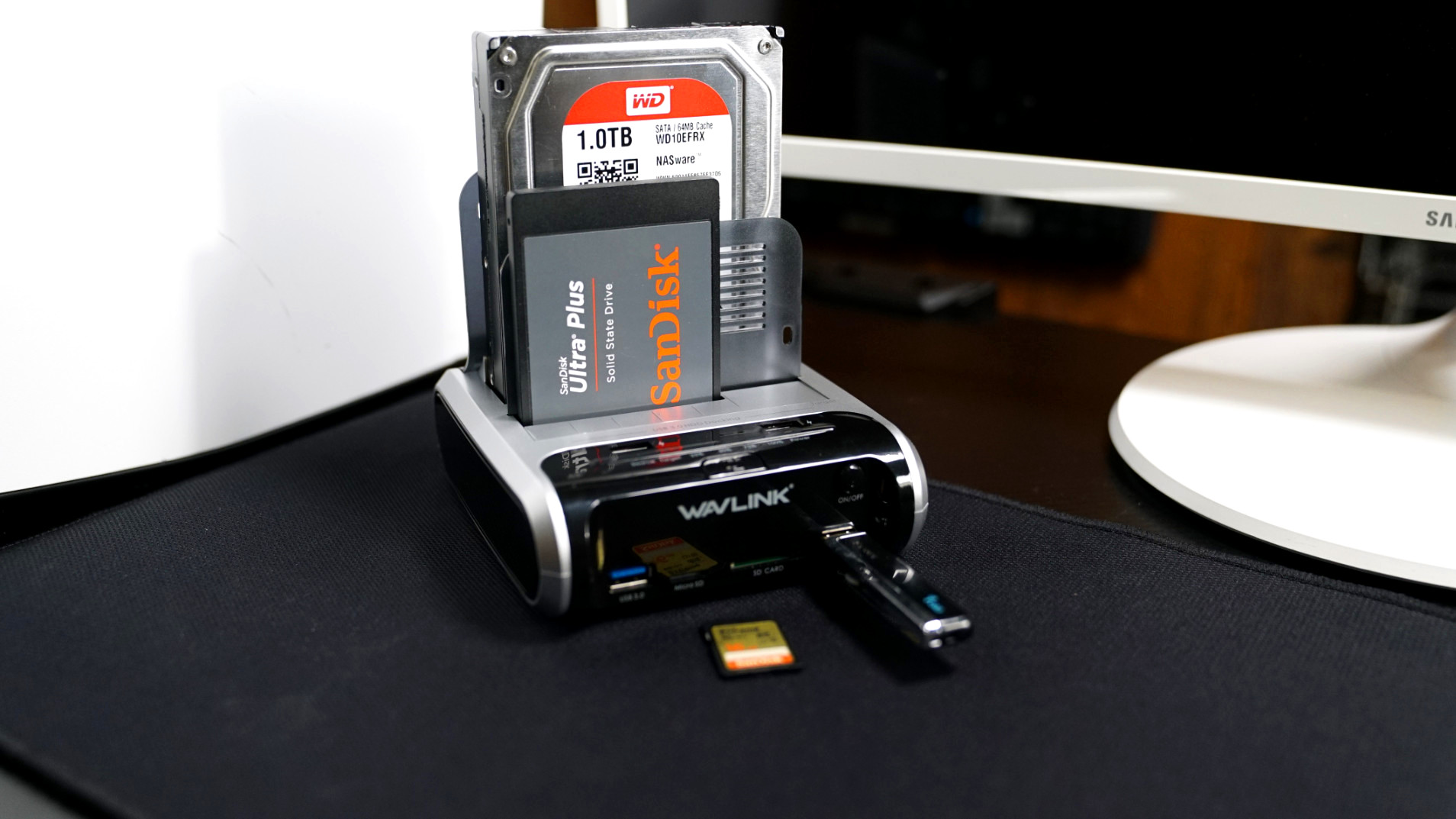 For Solid-State Drives
For Solid-State Drives
Most SSDs, like Samsung’s 860 EVO Series and Crucial’s MX500 Series use a form of security that’s known as AES (Advanced Encryption Standard) 256-bit encryption. This integrated security basically scrambles your data into a form that’s similar to coded messages. These need a key for deciphering. In this case, the key size is 256 bits. This amount of bits is more than enough to deter hackers. More bits makes it harder to figure out the exact 1s and 0s of your data.
Solid-state drives such as WD’s Blue Series and Samsung’s 860 Pro Series have compatible software that makes it easy for you to manage and optimally maintain your storage drives. For WD, SSD Dashboard and Acronis True Image together serve as a monitoring and backup tool, respectively. Samsung’s SSD-management software, called Samsung Magician, provides a multitude of features including: firmware updates, performance benchmarks + boosts and enhanced data-security options.
Accessories
Even desktop PC components such as storage drives have accessories. The following categories of items do not necessarily enhance the performance of your storage devices. Rather they improve and ensure the proper usability of them within your PC ecosystem.
Mounting Brackets
You’ll need an SSD mounting bracket in the following scenarios:
- Your case is older and came out before SSDs became popularized.
- The new case you’re shopping for does not come with SSD bays.
Since they basically serve to fit your SSDs into the larger hard-drive bays of your case, these devices are technically converters or adapters. Similar to working with an HDD, secure your SSD into the mounting bracket. Then, all you have to do is screw in the bracket to the hard-drive bay.
SATA Cables
While shopping, make sure you check if the product you’re buying comes with a SATA cable. As mentioned earlier, your power supply will have the power SATA cable that plugs into you’re SSD or HDD. You’ll also need a data SATA cable (its connector is shorter in size to the power SATA connector). Data SATA goes from your storage drive to the SATA port on your motherboard.
Enclosures
A way to turn your internal hard drive into an external one. Perhaps you have some data on your desktop PC drive, but it’s too big to send via Internet and you don’t have a sizable USB flash drive. Simply install your solid-state drive or traditional hard drive by way of the SATA connectors inside one of these enclosures. Then connect it via USB. Just make sure the formatting for your drive works with the system you’re pulling it up on. If that’s all clear, you’ve just made yourself a secure, external storage device.
Docking Stations
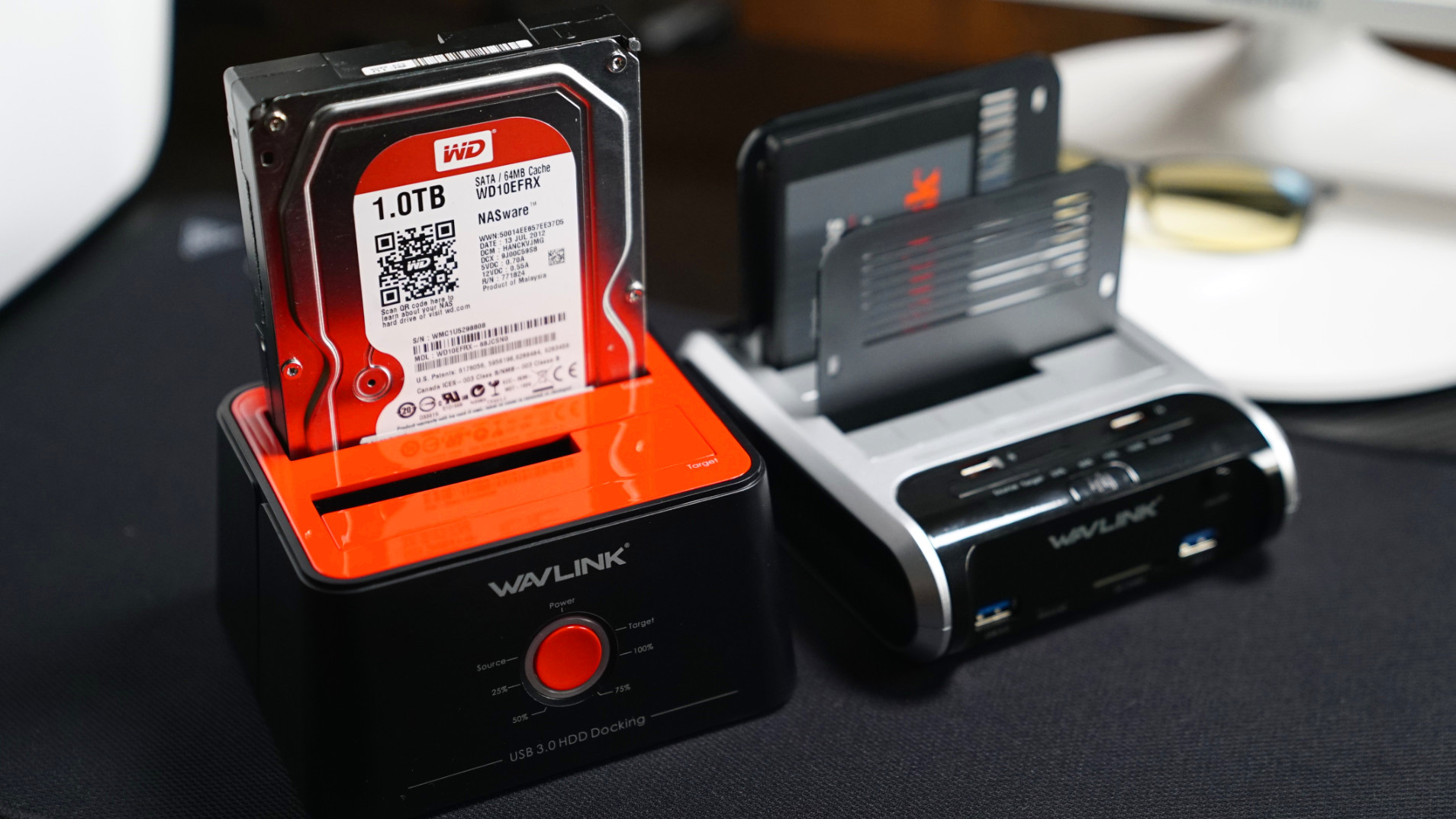 Docking stations serve as a highly efficient and convenient way to copy and transfer information stored on your storage devices. The process is just like plugging in a cartridge on a classic video-game console. Simply plug in your storage devices (take note of the difference in SATA-connector shapes). Then choose which drive’s data goes to the other. Many of these docking stations also come in single form, essentially serving as an alternative enclosure/external storage device.
Docking stations serve as a highly efficient and convenient way to copy and transfer information stored on your storage devices. The process is just like plugging in a cartridge on a classic video-game console. Simply plug in your storage devices (take note of the difference in SATA-connector shapes). Then choose which drive’s data goes to the other. Many of these docking stations also come in single form, essentially serving as an alternative enclosure/external storage device.
Final Thoughts
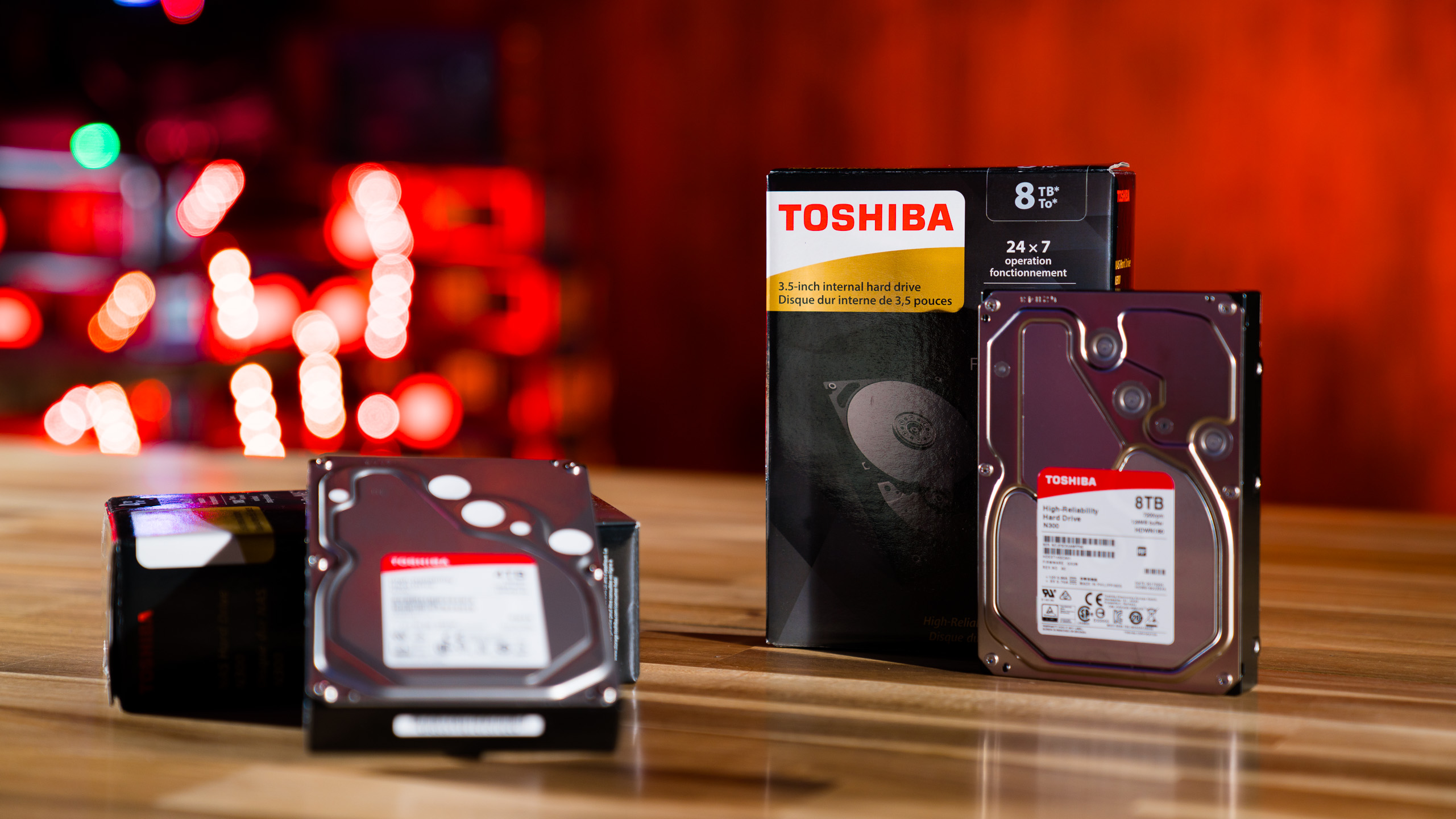 You made it through the buying guide! Hopefully you now have a better understanding of the workings and purposes of the currently-available desktop-PC internal storage devices. It’s clear that SSDs are faster than HDDs. Each serves an essential purpose in various scenarios despite the difference in performance though. For the most part, price will give you a clear indication on performance and storage. More storage and better performance will cost more—and HDDs, being the older technology, are generally more affordable than SSDs.
You made it through the buying guide! Hopefully you now have a better understanding of the workings and purposes of the currently-available desktop-PC internal storage devices. It’s clear that SSDs are faster than HDDs. Each serves an essential purpose in various scenarios despite the difference in performance though. For the most part, price will give you a clear indication on performance and storage. More storage and better performance will cost more—and HDDs, being the older technology, are generally more affordable than SSDs.
No matter what, Newegg has you covered by always offering the latest and greatest in both HDDs and SSDs for your desktop PC.

